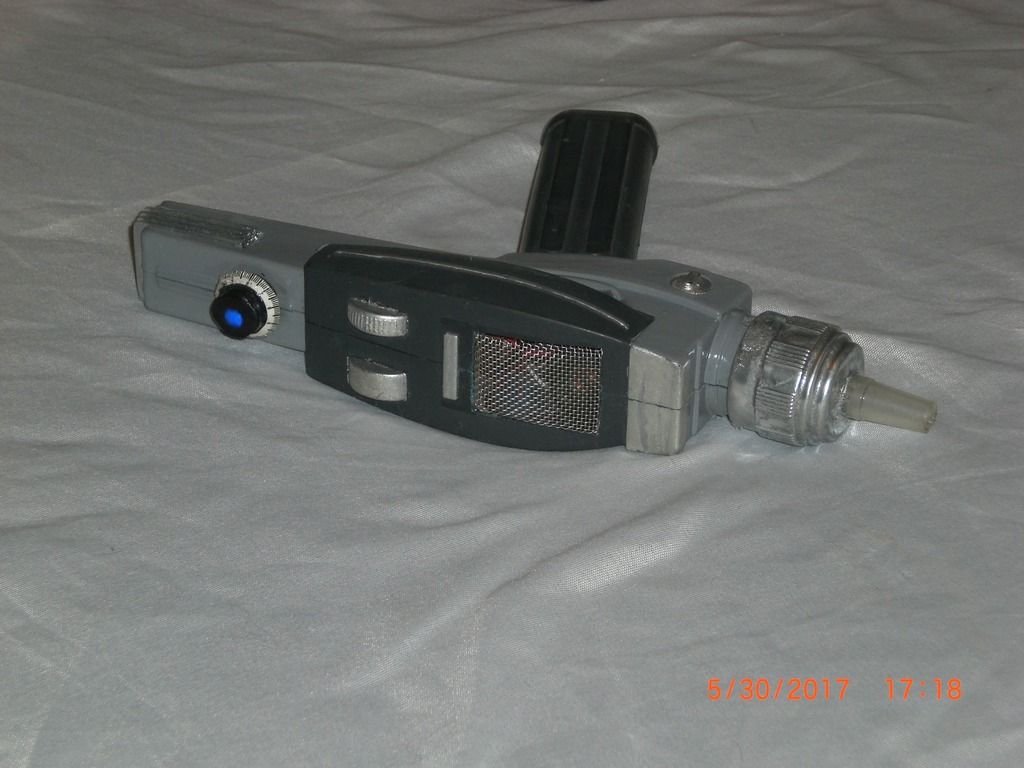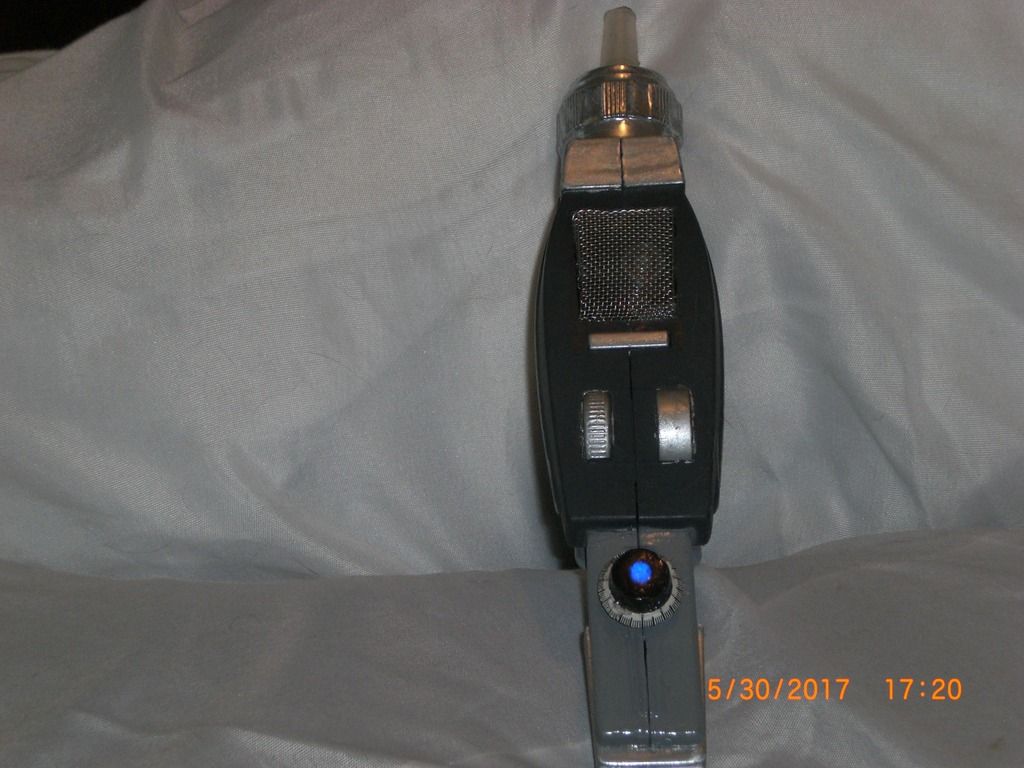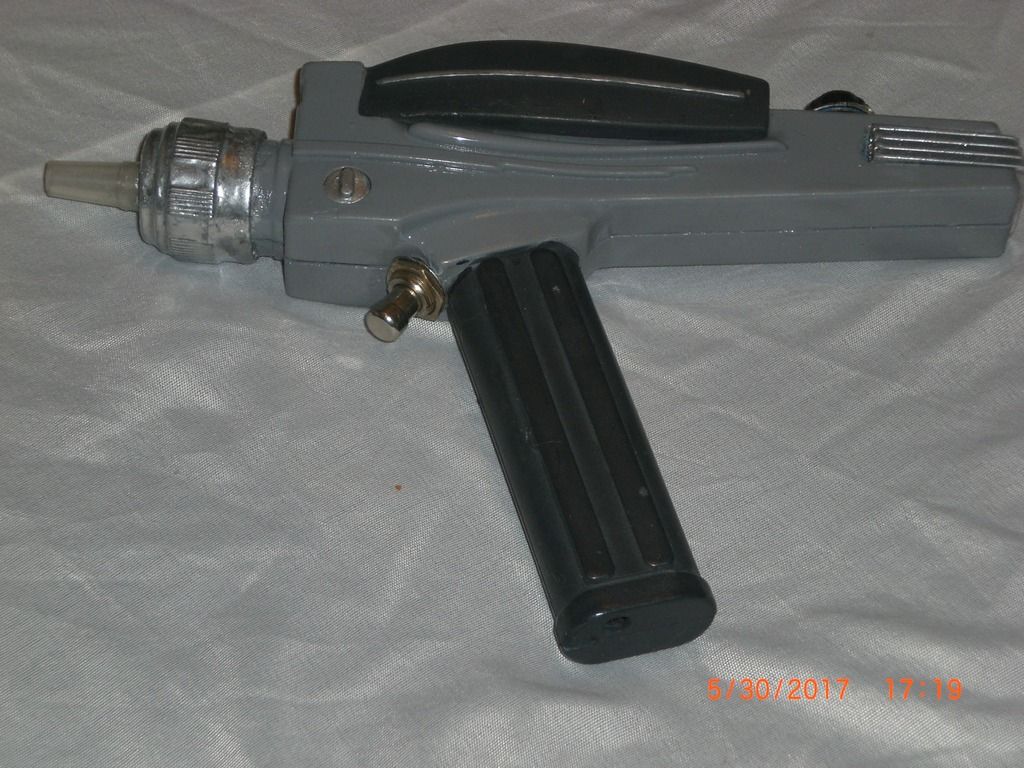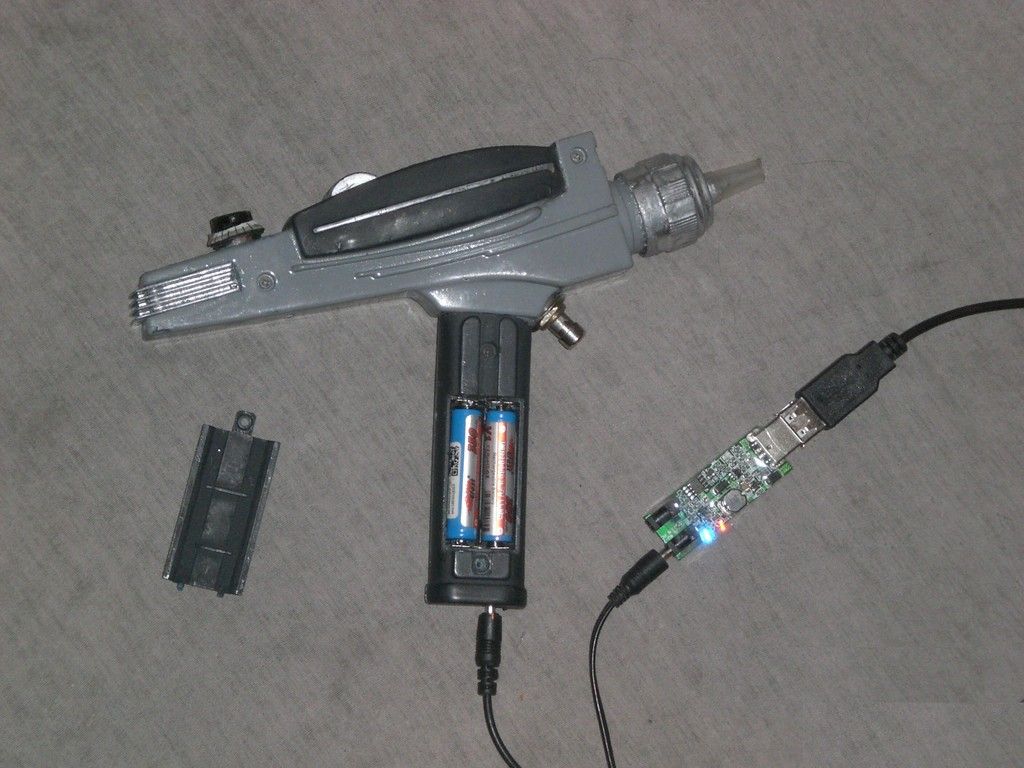I repainted the phaser, I'll take some pictures of it tomorrow, my neighbor borrowed my tripod, and I've given up on taking a decent picture of anything closeup without it. That's the one thing about the Rubie's model, it has to be painted, and paint doesn't like sticking to plastic very much.
I have considered "the phaser" as an ongoing project, that will probably never stop, until I get bored with it, as technology improves. This is now about the fourth version, but I started over from scratch, on this one, and I managed to keep it under $250, which is a new record low cost. I know who makes the nice, machined, metal parts, but those are a little rich for my tastes, and besides, I kind of like that part of it says "toy", and doesn't jump right out as being otherwise, until you pick it up, anyway. My earlier generations, with the exposed metal fins on the heat sink, although they looked great, they strongly suggested that something more was going on there. I like the surprise factor when I turn it on for someone the first time, and do my best "mad scientist" grin and insane laugh, and get to work burning things, and popping balloons.
Besides, if I am going to start putting in real, metal parts, the first thing I would do is make the model's fake heat sink on the back of the model (that the Rubies has an extra piece for) out of metal, and use that to heat sink the driver board, rather than the knob on the front. I spent many hours trying to scheme a way to do that with the tools in my shed, somehow, but couldn't come up with anything practical. I thought of soldering it together with the sheet copper I used to make the actual heat sink that I made, and hid inside. But then I'd want to electroplate it, and nothing will stick to the lead solder, which would leave me painting it, which defeats the entire purpose for doing it in the first place. It kind of has to be machined. If I could get around that, then one that looks completely real would be in order. My study of the original model design gave me some insights, I was impressed with it, really, someone put a lot of thought into what they thought (in the '60's) a real energy weapon would have to have, the first thing I noticed was that heat sink on the back of it, and I thought that I would make the handle part a removable battery, and felt so vindicated by pictures of one of the actual prop models that that's exactly what they did. It made sense, and all of those little details become so practical when you are trying to build an actual energy weapon that looks like it. Except their concept that the top part, which would have the really expensive parts, is it's own unit, with the base part being an amplifier, and larger battery adapter, that the palm phaser plugs into, for more power and battery duration, in times when it wouldn't need to be concealed. It's a great idea, but not very practical for an NUBM44 build at all. I suppose the Playmates wasn't really more practical, since it has all kinds of little gizmos going on that won't be there once built, and a larger sound board, with 4 different sounds, which had to be bridged to just one, and that huge speaker that had to be replaced before anything would fit inside it, but only because it had an enlarged handle that would hold AA size batteries. And the crippling factor of the Rubies was it's handle only held AAA size cells. But the state of technology constantly improving, such that it is, presented me with IMR 10440 cells, and changed all that on this build. And that's how I ended up with an NUBM44 in a Rubies phaser model, and the batteries go in the original place in the handle! Oh the miracles of modern technology!
Footnote, what the original prop design seriously overlooked was any provision for sights, to aim the thing, maybe they didn't think you'd ever have to aim a laser. I suppose you don't really, you could point aim it like a laser pointer, except that this one will incinerate everything the dot hits, so bringing it on target would be, well, destructive. You certainly wouldn't be able to use it like a sniper, or anything.








